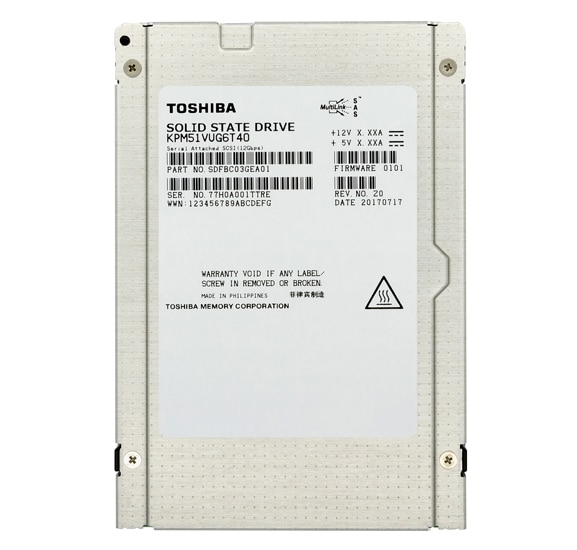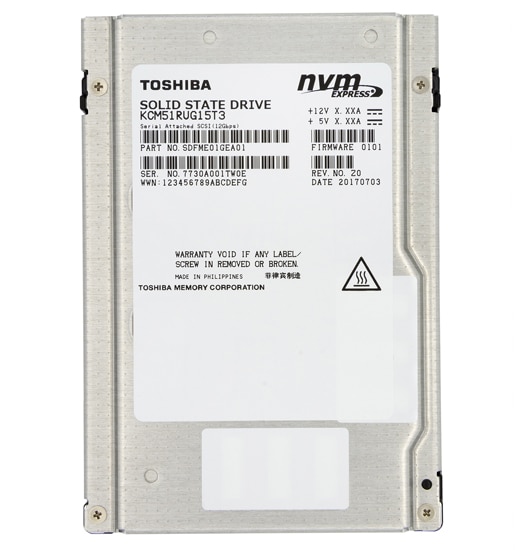
Today Toshiba America Electronic Components, Inc. (TAEC) continued on with its announcements of new products that feature its 64 layer, 3-bit-per-cell BiCS Flash technology (the other two being the TR200 and the BG3). Unlike the value drive and client NVMe SSD announced over the last few weeks, the drives announced today will feature the company’s 64 layer, 3-bit-per-cell enterprise-class TLC (triple-level cell) BiCS Flash. The new drive series are the TMC PM5 12Gbit/s SAS series and the CM5 NVM Express (NVMe) series.
The two new series will come with new, advanced features bringing higher performance and giving organizations new opportunities to leverage flash in their data centers. The PM5 comes in a 2.5” form factor with a 12Gbit/s SAS interface. The PM5 ranges in capacities from 400GB to 30.72TB with sanitize instant erase (SIE) and Trusted Computing Group (TCG). The CM5 comes in U.2/2.5” and AIC form factors and utilizes an NVMe dual-port PCIe Gen3 x4 interface. The CM5 comes in capacities ranging from 800GB to 15.36TB with SIE and TCG. Both TLC-based product lines offer industry standard endurance ratings with 1, 3, and 5 DWPD options, and the PM5 has a 10 DWPD option available.

The PM5 is a SAS SSD aimed at companies looking to leverage their existing storage while increasing density and performance. The PM5 utilizes MultiLink SAS architecture (according to Toshiba the first industry’s first drive to do so). In a system that supports MulitLink, the PM5 can hit near PCIe-based performance with a SAS interface; sequential read of 3.35GB/s and random reads of 400K IOPS. The drive also supports multi-stream write technology, which is a specification that intelligently manages and groups data types to minimize write amplification and minimize garbage collection, translating into reduced latency, improved endurance, increased performance and QoS.
The CM5 is the new NVMe SSD geared for the enterprise that also supports multi-stream write technology. The CM5 is NVMe over Fabric-ready with scatter-gather list (SGL) and controller memory buffer (CMB) features. From a performance perspective the CM5 5 DWPD can hit numbers of 800K IOPS random read and 240K IOPS random write and the 3DWPD model can hit up to 220K IOPS random write, both having a maximum power usage of 18W. The drive is also being used by Toshiba as a platform to demonstrate the Persistent Memory Region (PMR) capability. According to Toshiba, PMR enables customers to augment system memory with DRAM on the SSD without the use of expensive non-volatile DIMMs (NV-DIMMs). This feature is aimed at reducing costs though moving metadata operations (logging, journaling, and application staging) to the SSD that will provide persistent memory as well as high performance storage.
Availability
Both the PM5 and CM5 series are sampling now with select OEM partners. Development is expected to be completed in the fourth quarter. Toshiba will be demonstrating the drives at the Flash Memory Summit in Santa Clara, CA, from August 8 to 10 in booth #407.
Sign up for the StorageReview newsletter

